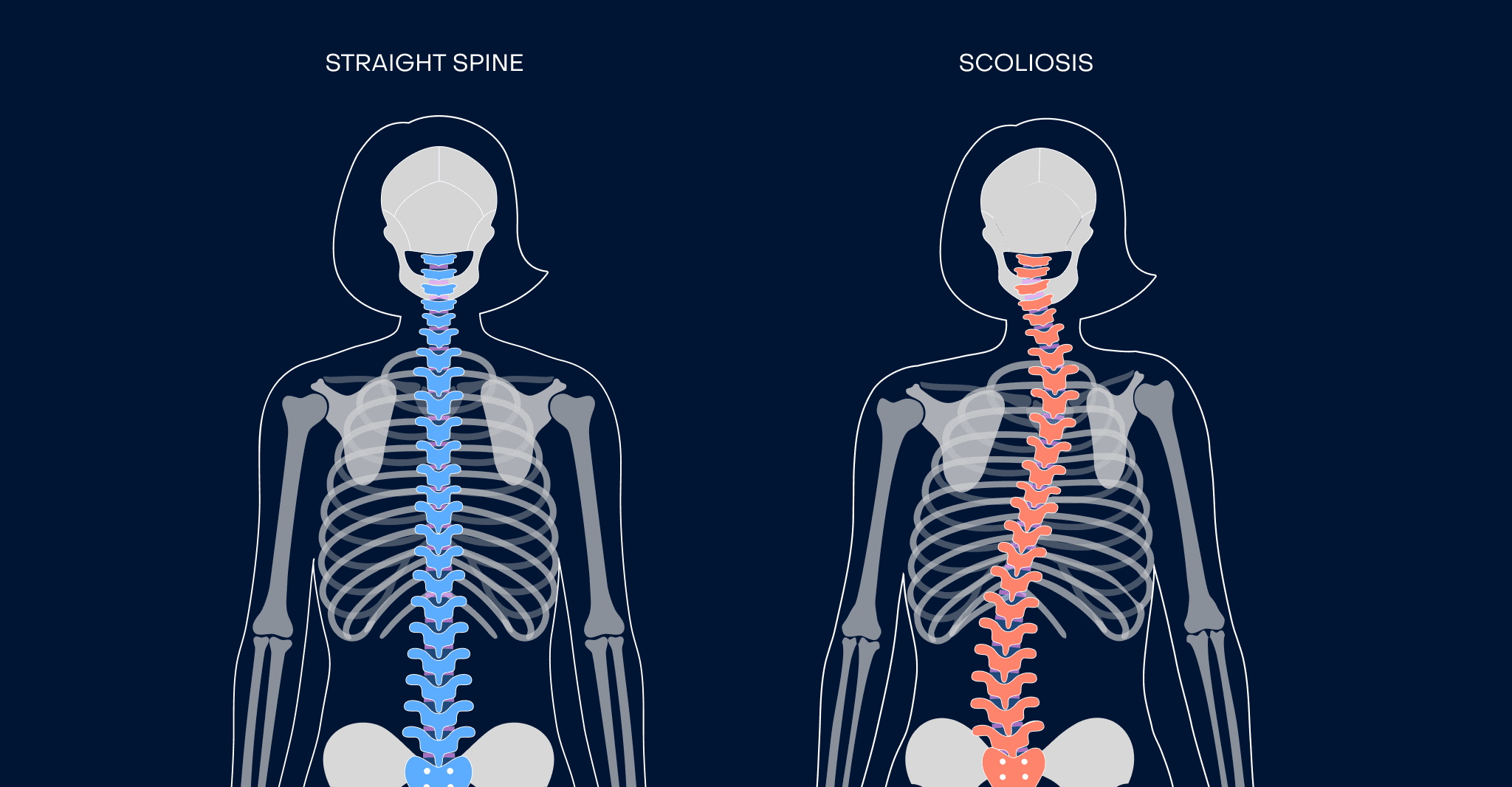Can Scoliosis Cause Sciatica?
When spinal curves go beyond the norm, can they compress your nerves too? Let’s explore the connection between scoliosis and sciatica.
Key Takeaways:
- Scoliosis can cause sciatica by compressing or irritating the sciatic nerve roots, especially in the lumbar spine.
- Mild scoliosis may still lead to sciatic symptoms if posture and movement patterns are significantly affected.
- Physical therapy is a highly effective, non-invasive option for managing both scoliosis and sciatic nerve pain.
Can scoliosis cause sciatica?
Yes — scoliosis can cause sciatica, especially when spinal curvature in the lumbar region places pressure on the sciatic nerve or its roots. The sciatic nerve runs from the lower back down through the hips, buttocks, and legs. When the spinal alignment is abnormal, it can lead to nerve compression, inflammation, and radiating leg pain that characterizes sciatica.
How Scoliosis and Sciatica Are Connected
Scoliosis refers to a sideways curvature of the spine that often forms during adolescence but can also emerge in adulthood, especially due to degenerative changes. When this curvature occurs in the lumbar spine — the lower part of the back — it can:
- Shift the position of vertebrae and discs
- Compress the spaces where nerves exit the spine
- Increase pressure on one side of the body, leading to muscular imbalances and nerve irritation
That’s why lumbar scoliosis can cause sciatica, particularly when the curve places pressure on one or more nerve roots.
What Does Sciatica From Scoliosis Feel Like?
When scoliosis causes sciatic nerve pain, symptoms may include:
- Sharp, shooting pain down one leg
- Tingling or numbness in the buttocks, thigh, or calf
- Muscle weakness in the affected leg or foot
- Increased pain after standing or walking for long periods
Even mild scoliosis can contribute to sciatic symptoms if it causes muscular compensation, poor posture, or spinal instability.
Can Mild Scoliosis Cause Sciatica Pain?
While many people with mild scoliosis remain asymptomatic, others may still develop sciatica pain from mild scoliosis if their spinal curve leads to:
- Muscle fatigue or imbalance
- Uneven load distribution on discs and joints
- Chronic inflammation near nerve roots
In these cases, addressing the underlying biomechanics is just as important as relieving nerve-related symptoms.
Treatment Options for Scoliosis-Induced Sciatica
For most individuals, non-surgical treatment is highly effective. This includes:
Physical Therapy
Targeted therapy can help:
- Improve spinal alignment and core stability
- Reduce inflammation and nerve irritation
- Retrain movement patterns that relieve pressure on the sciatic nerve
At Synaptic Rehabilitation, we create custom programs based on the patient’s unique spine curvature and pain profile.
Manual Therapy
Hands-on techniques can relieve muscle tension, improve mobility, and reduce nerve impingement.
Posture & Ergonomic Coaching
Simple changes in how you sit, stand, and sleep can make a huge difference in reducing sciatic pain.
Bracing or Support Devices
In more severe cases, spinal braces may be recommended to reduce the curvature and prevent worsening nerve symptoms.
When to See a Physical Therapist
If you’re experiencing symptoms of sciatica — especially with a known scoliosis diagnosis — it’s time to consult a physical therapist. Early intervention can prevent further nerve damage, reduce pain, and improve mobility.
Get Expert Relief for Sciatica & Scoliosis in Bridgewater, NJ
At Synaptic Rehabilitation, we specialize in treating nerve pain, spinal conditions, and postural imbalances with personalized physical therapy. Located at 1200 Route 22 East, Suite 4, Bridgewater, NJ, our clinic is equipped to help you find real, lasting relief.
Call 908-801-6425 to schedule your evaluation today and discover how we can help you move better, with less pain.
Steven Cheung, DPT
Steven is the founder and lead physical therapist at SYNAPTIC Rehabilitation. He earned a BS in Exercise Science Applied Kinesiology from Rutgers University in New Brunswick, NJ and his Doctorate degree from American International College in Springfield, MA. Steven specializes in movement disorders such as Parkinson’s disease and many other neurological disorders. Outside of practicing physical therapy Steven enjoys time with his wife, running, and staying active.

